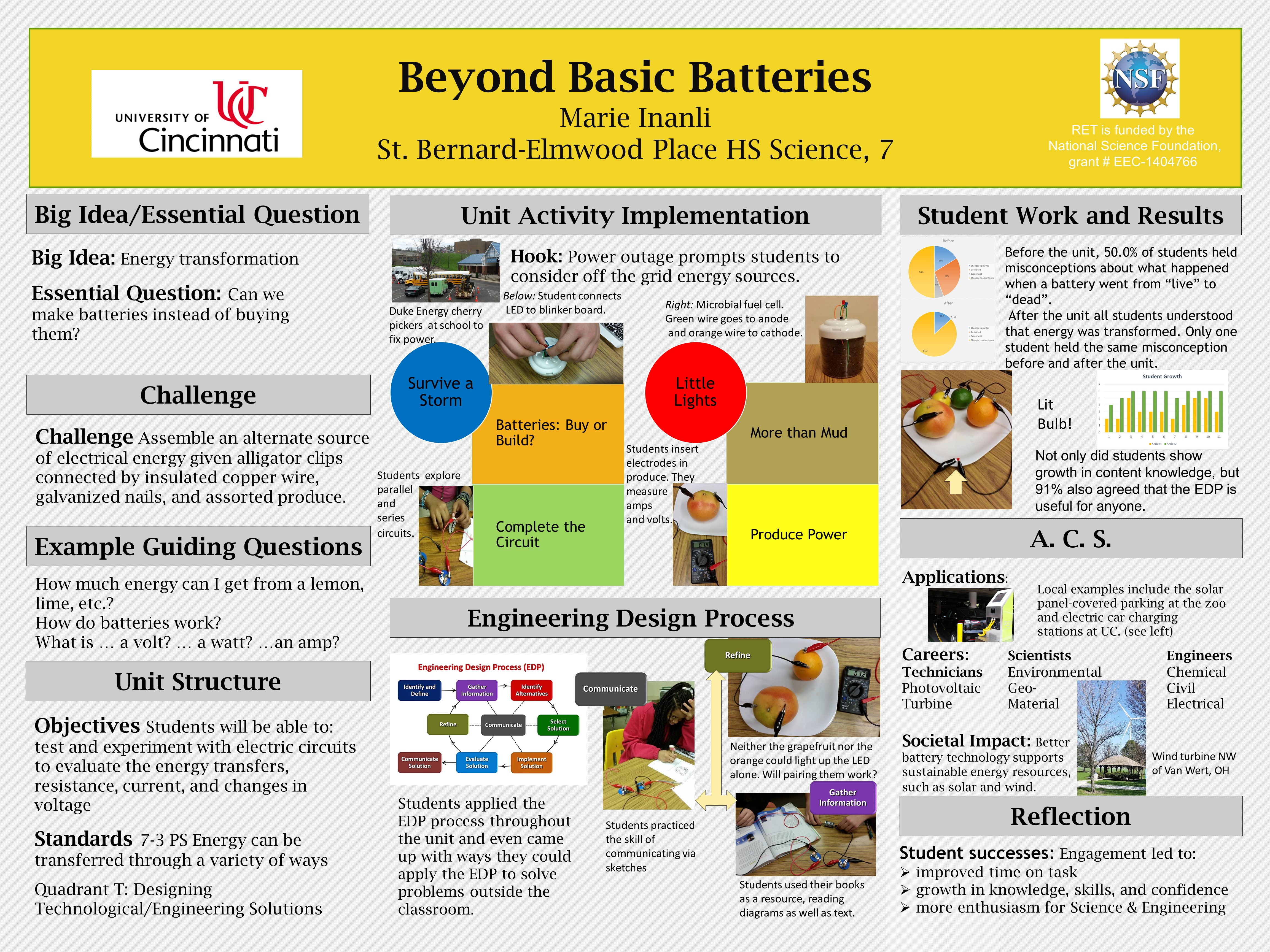Research Experience for Teachers (2015-2016)
Beyond Basic Batteries
(Although this unit was taught, the teacher reflections and student results were not documented.)
 |
||||||
|
||||||
|
Pre/Post Test: |
||||||
|
The Big Idea (including global relevance) Electrical Energy |
|
Essential Questions Can we make a battery instead of buying one? |
|
The Hook
Be a hero: prevent panic by providing portable power |
|
The Challenge A major storm knocks out power. Your local power company predicts electricity will be out for a few days. All the stores are out of batteries. Build the best battery for your needs. Evaluate battery by determining if it can light an LED bulb. |
|
Guiding Questions
|
ACS (Real world applications; career connections; societal impact)
The use of household materials to solve a problem builds competence and confidence in their ability to deal with a variety of challenges both at home and at work.
To this unit include a variety of STEM careers including but not limited to chemical and electrical engineering, trades such as electricians and HVAC technicians
As result of understanding how energy, electricity, and batteries work students can become more conscientious citizens, better equipped to deal with energy choices individuals, corporations and communities will need to make as consumption grows.
Misconceptions
- One common idea, the “source-consumer” model, reveals that some students believe batteries send out a substance that gets “used up”. Students often show this by sketching a single wire attached to one (usually the top) terminal of the battery and the other end attached to the bulb. A similar model involves using two wires, each attached to each end of the battery and the bulb – each with wire carrying energy from the battery to the light bulb. (Driver et al. 1994) When dry cells“die” they do not “run out of electricity” Instead, the battery’s chemical reaction fails to fuel the movement of electrical charge.
Unit Lessons and Activities
- Lesson 1: Energy on the Move introduces students to concepts around the Big Idea i.e. Energy and its transformations. Students will investigate the basics of batteries and circuits. A video hook will lead students to develop essential questions.
- Activity 1: How Batteries Work
- Activity 2: Complete the Circuit
- Lesson 2: Survive a Storm invites students to consider a scenario in which a storm leads to a prolonged power outage. They consider how they can apply scientific principles to engineer a solution by building a battery. Students work in teams through multiple iterations and communicate results via a choice of media.
- Activity 3: Little Lights
- Activity 4: Build a Battery
- Evidence of CBL: Lesson 1, Activity 1; Lesson 2, Activity 4
- Evidence of EDP: Lesson 2, Activity 4
Additional Resources
Teacher written resources to align with pHET simulation
Recent articles touting the use of produce as an energy source
